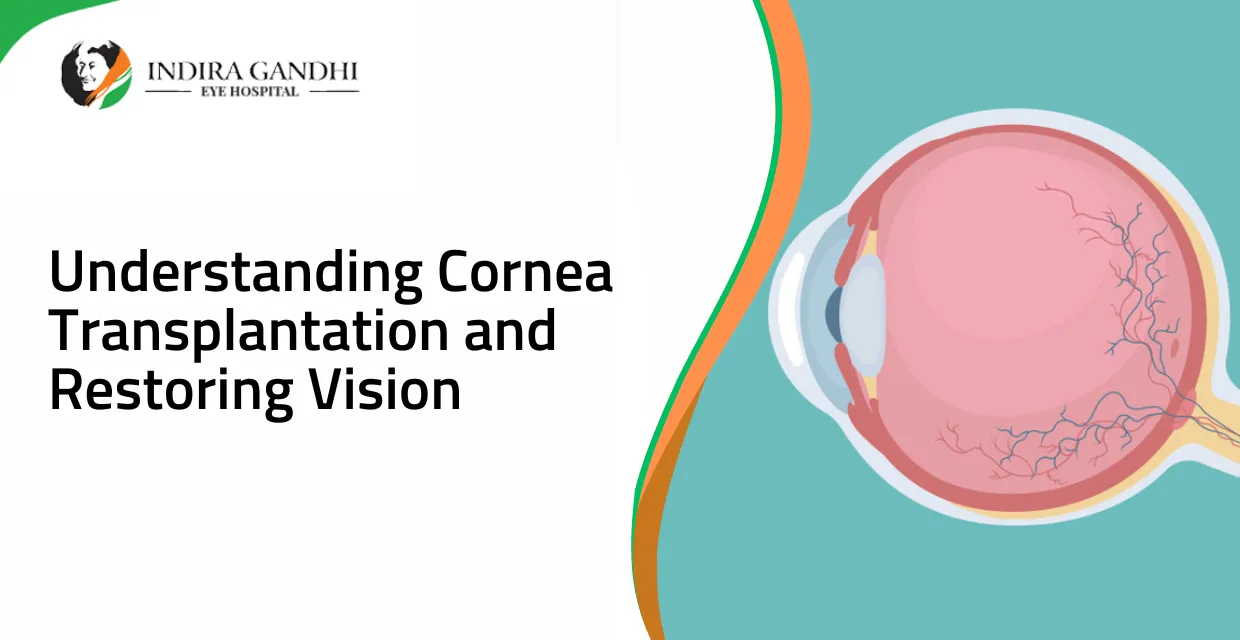Imagine a world without the gift of sight. Our vision plays a fundamental role in how we experience life, connecting us with the world around us. Unfortunately, many individuals face vision loss due to various corneal conditions or injuries. However, thanks to the remarkable advances in medical science, cornea transplantation has become a life-changing solution, restoring vision and transforming lives.
The Cornea: A Window to the World
Before we dive into cornea transplantation, let's first understand the significance of the cornea. The cornea is the transparent front part of the eye that acts as a protective layer and helps to focus light onto the retina, allowing us to see clearly. It is a delicate and vital structure responsible for the majority of our vision.
Common Corneal Conditions: The Need for Transplantation
The cornea, being the transparent front part of the eye, plays a crucial role in our ability to see clearly. However, various corneal conditions can disrupt its function and impair vision. Conditions like corneal dystrophies, keratoconus, corneal scars, and corneal infections can have detrimental effects on the clarity of vision, causing blurriness, distorted images, or even complete vision loss.
Corneal dystrophies encompass a group of genetic disorders that affect the cornea's structure and function. These conditions can result in progressive vision loss and corneal clouding.
Keratoconus, on the other hand, is a non-inflammatory condition characterized by the thinning and bulging of the cornea, leading to distorted and blurry vision.
Corneal scars can develop due to injuries, infections, or previous surgeries, causing visual disturbances and compromising the transparency of the cornea.
Corneal infections, such as bacterial, viral, or fungal infections, can severely damage the cornea, resulting in vision loss if left untreated.
For individuals who find themselves grappling with these conditions, cornea transplantation emerges as a ray of hope, offering the potential to restore their sight and transform their lives.
Understanding the Transplantation Process
Cornea transplantation involves replacing a damaged or diseased cornea with a healthy cornea from a deceased donor. The process begins with careful donor selection, ensuring the suitability of the cornea for transplantation. The donated cornea is then harvested and prepared for transplantation. Surgeons employ advanced surgical techniques to replace the damaged cornea with a healthy donor cornea, aiming to restore clarity and visual acuity.
Understanding the Transplantation Process |
Step 1: Donor Selection |
Donor selection is crucial in cornea transplantation. Donated corneas are carefully evaluated for suitability. Factors like the donor's medical history, age, and corneal condition are assessed to minimize complications and maximize success. |
Step 2: Harvesting and Preparation |
Once a suitable cornea is identified, it is harvested from the deceased donor. The cornea is preserved, transported under sterile conditions, and prepared for transplantation. This may involve trimming and sizing the cornea to match the recipient's needs. Specialized storage media are used to maintain the cornea's health and integrity. |
Step 3: Transplantation Surgery |
Skilled surgeons perform transplantation surgery using advanced techniques. The recipient's damaged cornea is removed, and the healthy donor cornea is placed and secured in position. The surgery aims to restore clarity and visual acuity to the recipient's eye. |
Step 4: Post-operative Care and Recovery |
After transplantation surgery, the recipient receives post-operative care and medication. Regular follow-up visits monitor healing and visual outcomes. Recovery time varies, but gradual improvement in vision is expected. |
Step 5: Visual Rehabilitation and Follow-up |
Visual rehabilitation may be required to optimize the recipient's vision. This can involve glasses, contact lenses, or additional procedures like refractive surgery. Regular follow-up appointments ensure the long-term health and stability of the transplanted cornea. |
Benefits and Success Rates
Cornea transplantation brings about significant benefits for recipients, resulting in a remarkable improvement in their lives. The procedure has the potential to restore clear vision and enhance overall quality of life. After undergoing cornea transplantation, recipients commonly report the following positive outcomes:
Improved Visual Acuity: One of the primary benefits of cornea transplantation is the restoration of clear vision. Many recipients experience a significant improvement in their visual acuity, allowing them to see more clearly and with greater sharpness. Blurriness, distortions, and other visual impairments associated with corneal conditions are often alleviated.
Reduction in Symptoms: Cornea transplantation can effectively alleviate symptoms associated with corneal conditions. Recipients often experience a reduction in discomfort, pain, and irritation that were previously caused by their damaged or diseased cornea. This relief contributes to improved overall comfort and well-being.
Enhanced Quality of Life: Restoring clear vision through cornea transplantation has a profound impact on the quality of life of recipients. They regain the ability to perform daily activities with ease and confidence, such as reading, driving, recognizing faces, and enjoying hobbies. The newfound visual clarity allows recipients to fully engage in their personal and professional lives, leading to a greater sense of independence and fulfillment.
The success rates of cornea transplantation are generally high, with a significant number of recipients experiencing positive outcomes. While individual results may vary, the majority of recipients regain clear vision and achieve their desired visual goals. The success of the procedure is attributed to advancements in surgical techniques, careful donor selection, and post-operative care.
Recovery and Post-Transplant Care
After undergoing cornea transplantation, recipients enter a crucial phase of recovery and post-transplant care. This period is essential for the transplanted cornea to heal properly and for recipients to achieve long-term success and optimal visual outcomes. Here are some important aspects of recovery and post-transplant care:
Medications: Recipients are prescribed specific medications to prevent infection and rejection of the transplanted cornea. These medications may include antibiotic eye drops or ointments, as well as immunosuppressive medications to suppress the recipient's immune system and minimize the risk of rejection. It is vital for recipients to diligently follow the prescribed medication regimen to ensure a successful recovery.
Eye Protection: Protecting the eyes during the recovery period is crucial. Recipients are advised to wear protective eye shields or goggles, especially while sleeping, to prevent accidental rubbing or trauma to the newly transplanted cornea. It is important to follow the instructions provided by the ophthalmologist regarding the duration and extent of eye protection needed.
Follow-up Visits: Regular follow-up visits with the ophthalmologist are scheduled to monitor the healing process and assess the long-term health of the transplanted cornea. These appointments allow the healthcare provider to evaluate the recipient's progress, check for any signs of complications, and make any necessary adjustments to the post-operative care plan. Recipients should attend all follow-up visits as scheduled and communicate any concerns or changes in their vision to the healthcare provider.
Healing and Visual Recovery: The recovery period following cornea transplantation varies for each individual. Initially, recipients may experience some discomfort, mild pain, or blurry vision, which is normal as the cornea heals. Over time, as the cornea gradually stabilizes and the healing progresses, recipients can expect to see improvements in visual clarity and acuity. It is important to be patient during this process and not expect immediate results. The ophthalmologist will provide guidance on the expected timeline for visual recovery and address any concerns that may arise.
Lifestyle Adjustments: Recipients may need to make certain lifestyle adjustments during the recovery period. These may include avoiding strenuous activities, refraining from rubbing or touching the eyes, and following any additional instructions provided by the healthcare provider. Adopting a healthy lifestyle, including proper nutrition, adequate rest, and avoiding smoking, can also contribute to the overall healing process and the long-term success of the cornea transplantation.
Conclusion
Cornea transplantation is a remarkable medical procedure that restores vision, transforms lives, and brings hope to those affected by corneal conditions. By understanding the importance of the cornea, the transplantation process, and the tremendous impact it can have on recipients, we recognize the significance of this life-changing procedure.
The restoration of clear vision through cornea transplantation goes beyond the physical improvement of eyesight. It brings about a profound transformation in the lives of recipients. The ability to see clearly allows individuals to regain independence, engage fully in their daily activities, and experience the world in a whole new way.



